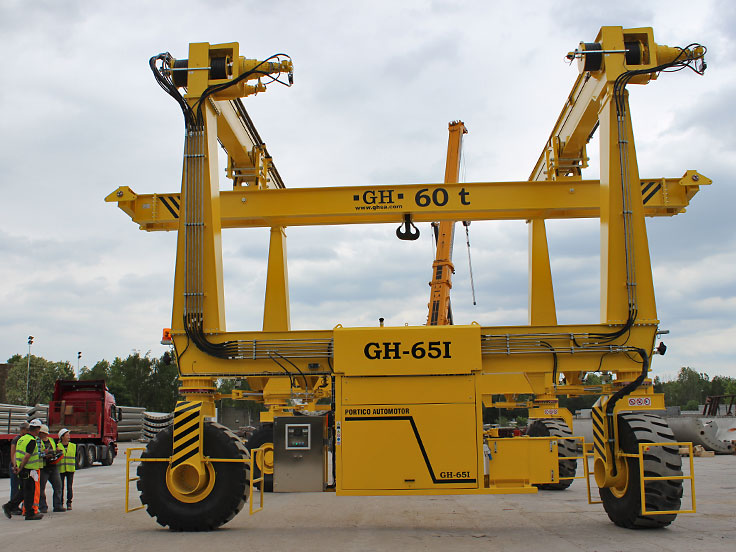Casters can be used for industrial moving and reduce the overall footprint of your industrial equipment.
Many times, you don’t have to buy a new crane just because it’s large and cumbersome. Sometimes all that is required is the installation of casters for your gantry crane.
What is a gantry crane?
A gantry crane is a type of overhead crane which runs on a rail system. The entire track or beam can be above or below ground, depending on your available space.
You’ll find this crane style in warehouses and manufacturing facilities because they’re ideal for use in large open spaces. Many manufacturers will even mount them at various locations in a facility for more flexibility.
When it comes to industrial casters, their primary role is to provide a smooth and clean rolling performance that can be applied to numerous types of industrial applications.
There are three main parts of a gantry crane:
- The crane’s beam run material or equipment along
- The hoist at the top
- A rail system to support the entire structure
You’ll also need some bearing to mount your caster wheels on. There are several types, but the most common is a hinge bearing. You can use a slide-on caster if you’d prefer, but the entire crane has to be moved when you mount or remove the casters. However, this costs more time and money than moving just the hoist with a hinge bearing.
Where should casters be placed?
Casters should be installed where the machine moves the most. The ideal locations are the corners (two casters per corner). If this is not possible, install them as far out on each side as possible without making it too difficult to move the crane.
Here are some of the benefits of using casters on gantry cranes:
Reduced footprint when storing the crane
When it comes to storing the crane for an extended time, it’s much easier and more convenient to keep the crane on its side with casters attached than trying to find a place to lay the crane down.
More effortless movement – even over rough surfaces
Casters can make moving your equipment across bumpy or uneven floors much easier, as the weight is easily transferred from the crane base to the wheels.
Reduced storage space
If you’re trying to figure out how to store your heavy equipment, it’s much easier and more convenient if you can roll it into a corner instead of stacking it on its side or trying to lift and flip over extensive equipment.
Whatever casters you choose will be a welcome addition to your crane.
How to choose casters?
Casters come in an assortment of materials, shapes, and sizes, and the most common are steel plates, rubber, or polyurethane wheels. The caster you choose depends on the type of loading condition your crane is exposed to, as well as cost considerations.
Since this article deals with gantry cranes, the focus will be on steel plates and rubber casters.
Steel Plate Casters
This type of caster has a flat roller, ideal for heavy-duty applications such as moving equipment over rough surfaces. It is the more durable option for your crane.
Rubber Casters
These casters roll smoothly and are perfect for warehouses, plants, or anywhere else where the floors are concrete or smooth. They also cost less than steel-plate casters.
Final Notes
As you can see, casters are an affordable addition to your crane that will make moving your equipment across bumpy or uneven floors much more manageable.

